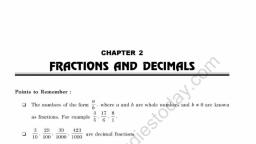Question Text
Question 2 :
An element belongs to the 3rd period and Group II of the periodic table.<br/>Name of the element is ________.
Question 3 :
The distance between the centre of nucleus and the outermost shell of an isolated atom is known as :
Question 4 :
The name given by Newlands to the arrangement created by him was :
Question 6 :
Assertion: The size decreases as $ Pb > Pb^{2<br/>+} > Pb^{4+ }. $
Reason: $ \dfrac {z}{e} $ increases i.e. force of attraction towards nucleus increases.
Question 7 :
Element X has twelve neutrons in its nucleus. To which group in the periodic table would it belong?
Question 8 :
The set of principal $(n)$ azimuthal $(l)$ and magnetic $(m)$ quantum numbers that is not allowed for the electron in H-atom is
Question 9 :
Assertion: Atom with large atomic radii and low ionisation potential are more metallic in nature.
Reason: Atom with large atomic radii and low ionisation potential have tendency to loose electron
Question 11 :
Compounds within a homologous series typically have a fixed set of :
Question 15 :
A sweet smelling compounds formed by reacting acetic acid with ethanol in the presence of hydrochloric acid is
Question 19 :
A mono-acid organic base gave the following results on analysis. C = 78.6% H = 84% N = 13%. 0.4 gm of the platinic chloride left on ignition 0.125 gm of pt. The molecular formula of the base is:<br/>
























